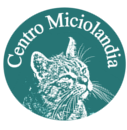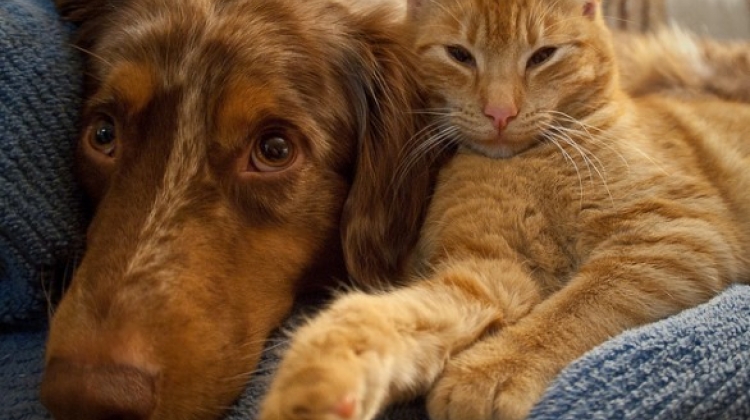Roberta
Tue 23 January 2018
0
The definition of 'pet therapy' includes a wide range of activities connected to the relationship between humans and animals. It's a very broad definition that can define many different situations and scenarios. The correct definition for those activities carried out together with animals is: Animal Assisted Intervention (AAI).
Inside AAI there are different types of activities:
- AAT (Animal Assisted Therapies), where the relationship with an animal is done at the same time as a medical therapy for physical or mental pathologies. The goal is to better the patient's condition through the interaction with an animal. This type of intervention is always carried out together with doctors and experts of the pathology suffered by the patient.
- AAE (Animal Assisted Education), where the encounter with an animal is an educational experience to better the relationship between human and animal, and learn more in general. The targeted patients aren't of a specific type, but they are always assisted by educators and other experts of the field.
- AAA (Animal Assisted Activities), less structured and more free interventions, usually with recreational purposes, together with experts of the field.
There are often misinterpretations regarding AAI, let's try to clear things up:
- During AAI animals are used for the good of the human: FALSE! In AAI the first thought must always be the safety and the well being of the animal, and the respect of its ethological characteristics. The animal is not an instrument, it's a partner with whom to share an experience, that has to be positive for both the human and the animal.
- Dogs are good for all situations: FALSE! Each dog is a unique being, with its own character and needs. So, the same dog could feel at ease dealing with children, but might not feel comfortable with senior people. Whenever we are planning an AAI it's necessary to evaluate the best individual animal for the intervention; and it's very important to say “no” if we think that the situation might hurt or unsettle the animal. This is important for any animal species taken in consideration for an AAI.
- Any animal is fine for any situation: FALSE! The different ethological characteristics make some species more fit in certain situations than others. It's clear how a rabbit does not have the same reactions and necessities of a horse. So it will be the duty of the AAI expert to pick the interventions more compatible to the animal, in order to avoid uncomfortable situations. The goal is to create a positive and useful interaction for everybody!
- Cats and dogs are very similar: FALSE! Cats and dogs are very different, they have different ethological characteristics and so different necessities. It would be unthinkable to create similar AAI project for a dog and a cat, we would end up not respecting the needs of one of them or both!
- Animal are taught to endure certain interactions with humans: FALSE! Or at least it should be. Unfortunately there are realities where the animal is considered a human property, and it's made endure unwanted human interactions, but this is absolutely and unquestionably wrong! The strength of AAI relies in the creation of natural and spontaneous interactions between different animal species. Great benefits for both the animal and the human come from these experiences. If the animal is not free to choose its own style of interaction, the intervention has failed from the beginning, under all points of view: the animal's, the human's, and the relationship itself. Of course the animals that work in this field have certain social characteristics, they are inborn characteristics strengthened by positive interactions during their lives. The job of the human expert is to accompany the animal partner in a shared experience not based on constraints, but based on loyalty, collaboration, and mutual respect.
How does the cat fit into the world of AAI?
The cat is a free and independent animal. It isn't a pack animal but a solitary hunter, therefore territorial space is very important. But the cat is also an animal able to create deep social and emotional relationships with humans and other animals. In the wild it tends to live in colonies where everybody respects each others' private space. So, beautiful moments can be created with the cat, as long as we respect the basic needs of this species.
Hardly ever a cat will feel comfortable to be taken to a new place to meet strangers with whom to interact. Such situation would create a lot stress for the cat, therefore we would not take it in consideration for an AAI project.
The ideal situation would be for the human to go to the cat's place. Operators and experts in this species' ethological characteristics will help the human make contact in the right way, letting the cat act freely in its territory, choosing if and how to interact with the human. A natural and free interaction for both parties. This interaction is always overseen by the AAI team responsible for the project (not just the animal handlers, but all the professionals required to accomplish a safe interaction for everybody). The cat involved will of course be a subject that loves a respectful relationship, appreciates human interaction and searches for it.
At times a good solution would be to introduce cats as stable members in a human context. But always after an evaluation by all the experts involved. The AAI projects where cats become stable residents have unsuspected high success and benefits for both parties involved.
AAA and AAE projects with cats can be created to spread knowledge of this amazing species' ethological characteristics and raise awareness on how to create a fulfilling and respectful relationship with a cat.
Lastly we need to consider the case where a cat shows an inborn social personality, an interest toward humans, making the animal search for important contacts even outside its safe and usual environment. In these cases it's possible to create an operational duo that can move around and do AAI in different situations; but always paying attention to what kind of environment will the cat find itself in, and only after the careful evaluation of an expert so to respect the needs of the animal. This way the cat can be a working companion without suffering any stress.
The principal and most important goal for an AAI operator is knowing the animal and respecting its well being, so to create a truly useful, satisfying, and pleasant interaction between animal and human.


Add new comment